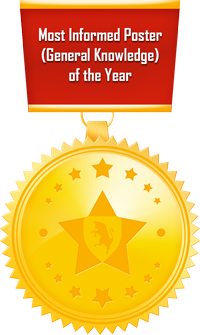The History Thread (4 Viewers)
- Thread starter Fred
- Start date
More options
Who Replied?
What is with these Internet abbreviations, what does MTE mean?
Bunch of lazy fucks
Bunch of lazy fucks
I suggest you bookmark that site. Very helpful.
Sounds the most likely scenario, if reports are true, the Vikings supposedly reached America in the tenth century, which is a century before the time the Muslims supposedly got there.
An interesting side story here: http://www.oakislandtreasure.co.uk/content/view/115/2/
Some think there is treasure in a chamber underneath the complex wood structure, but it is impossible to reach even with modern techniques because once one area is cleared there is a tunnel network that flood the next compartment with water from the lake.
you know history is mostly lies, you'll never know who got there first
like this story I heard once about the first man to climb mount Everest, they say he had local boys serving him in his mission, who kept going up and down the whole time for his needs, which means those people did it a million times before he came
like this story I heard once about the first man to climb mount Everest, they say he had local boys serving him in his mission, who kept going up and down the whole time for his needs, which means those people did it a million times before he came
One look at the map of the Atlantic is enough for an assumption that the first ones who came to the Americas through the Atlantic Ocean should have been northern Europeans. The road is much much shorter than if you do it from Portugal or France and the Benelux countries and you have lots of stops on the road. You don't even need to go far from the land in order to reach Canada. The longest landless trip is reaching Iceland. Granted, the weather conditions would favor the sailor from the south of Europe, but that's about it and everything else favors the northerners.
- Arab Linguist Anistas Karmali notes that as a result of Arab expeditions to America(that reached Mexico), there were some Arabic words in the Mexican's language. For example Typhoon(طوفان and Mansoon(الموسمية
and Mansoon(الموسمية .
.
you know history is mostly lies, you'll never know who got there first
like this story I heard once about the first man to climb mount Everest, they say he had local boys serving him in his mission, who kept going up and down the whole time for his needs, which means those people did it a million times before he came
like this story I heard once about the first man to climb mount Everest, they say he had local boys serving him in his mission, who kept going up and down the whole time for his needs, which means those people did it a million times before he came
Whether or not it was completely his achievement is something else.
That's not true at all. Sherpas probably didn't really WANT to go there. Generally people do what is necessary. It is only when your society can afford luxuries that you go and climb Mount Everest. It is completely plausible that he was in fact the first man there.
Whether or not it was completely his achievement is something else.
Whether or not it was completely his achievement is something else.
I don't know how was Mount Everest treated locally. If it was, dunno, the place where the Gods live or the place from where you can talk to the sun etc, it might have attracted interest from the locals to climb there.
But if it was the case we'd have probably heard about it so I guess you're right.
Ok, so that we stop spamming the "Post Your Picture" thread, i thought why not have a thread for History. We have quite a few Historians here that can help answer our questions and straighten out any loose ends.
So First on the menu
Did the Muslims discover America?
I read the paper my Professor gave me, and i'm going to summarize the main points here. Note that the paper is in Arabic, and this is all my personal translation, so if there are any mistakes, then my bad.
- Muslim scholar Abu Rayhan al Bayrooni(11th century) took it for granted that the earth was round, and because the earth is round, it cannot have one side of it land and the other side comprising completely of water, therefore there must be land on the other side. This encouraged many sailers at the time to go looking for land westward across the Atlantic
- Arab Historian and Geographer Al-Mas3udi writes in his book Mir2at Az-Zaman about mariners from Arabic Spain that sailed westward from across the Atlantic, one of them which was called Haikhas(who hailed from Cordova), Al-Mas3udi reports that Haikhas reached a remote land, most of those who sailed with him didn't want to go back, but Haikhas came back to Arabic Spain. According to Mas3udi this story of Haikhas was well known in the region at the time and he died in a naval battle with the Vikings. Though the author admits that the details of Haikhas's story are too vague.
- In the tenth century a group of mariners sailed from North Africa westward across the Atlantic and never came back
- Andalusian geographer and cartographer Il-Idrisi writes in his book Nuzhat Al-mushtaq fe ekhteraq el afaq, about an attempt quite famous at the time of 8 brothers from Arabic Lisbon to sail westwards across the Atlantic in search of the remote land. According to Il-Idrisi these attempts were quite common at the time. These 8 brothers were known at the time as "Al-Fitya Al-mogharareen" roughly translated into "The Stray Brothers". According to il-Idrisi, the Lisbon inhabitants were so happy and proud of the Stray Brothers that they named a dockside street in Lisbon "Darb Al-Mogharareen" roughly translated into The Road of the Strayers, they named it after the Stray Brothers. Il-Idrisi says in his book that after much hardship at sea, the Stray Brothers reached a land where sheep were free and had no shepherd, so they caught some of the sheep, slayed them with the intention of eating them, but then found their meat to be very sour and barely edible. Then they found the inhabitants of the land, they were surprised to find that amongst the inhabitants was a man that spoke perfect Arabic, he told them how he and a group of others had sailed from North Africa, and how only he had survived.
- Even when Christopher Columbus reached America and met with the Red Indians, after hearing them talk, he thought he heard a few Arabic words, which is why he assumed they were Arabs at first, so he called on one of his crew that was of Arab origin, to talk to the Red Indians, he then found out, that they weren't Arabs and didn't speak Arabic.
- Arab Linguist Anistas Karmali notes that as a result of Arab expeditions to America(that reached Mexico), there were some Arabic words in the Mexican's language. For example Typhoon(طوفان and Mansoon(الموسمية
and Mansoon(الموسمية .
.
- The Author notes that the first maps of America were infact Muslim and not Spanish nor Portuguese. He points to a map that was discovered in 1952 that now lies in El Escorial museum in Madrid, the map was drawn by Ibn Zayat in the tenth century. In the map he draws the Atlantic ocean and draws an inhabited Island, which is thought to be America.
- The Author also points to a map drawn by Ottoman Admiral Piri Rayes who passed away in 1513. The map was published by German Orientalist Paul Kahle. The map was of the Atlantic Ocean, with Spain on the East and another Island on the West(America). He draws the American continent with its coasts, its islands, its Animals and he then draws Red Indians shepherding sheep on the American Island. Russian Orientalist Krachkovsky argues that Peri Rayes must have based these maps from maps he may have confiscated from Columbus after a naval battle between the Turks and Venice in 1499. The Author dismisses this argument by claiming that Piri Rayes's map contained details of places Columbus had never been to. The author then suggests an alternative scenario/interpretation, that Piri Rayes might have got his data from Abu Abdulla the Second who was one of the last Arab rulers of Andalusia, Abu Abdulla the second lost Andalusia to Queen Esabella, the latter kept him to work for her, she then sent him to America to bring Columbus back to Spain. It was well documented that Piri Rayes and Abu Abdulla the second were good friends.
If any of the translation is unclear, please let me know.
So First on the menu
Did the Muslims discover America?
I read the paper my Professor gave me, and i'm going to summarize the main points here. Note that the paper is in Arabic, and this is all my personal translation, so if there are any mistakes, then my bad.
- Muslim scholar Abu Rayhan al Bayrooni(11th century) took it for granted that the earth was round, and because the earth is round, it cannot have one side of it land and the other side comprising completely of water, therefore there must be land on the other side. This encouraged many sailers at the time to go looking for land westward across the Atlantic
- Arab Historian and Geographer Al-Mas3udi writes in his book Mir2at Az-Zaman about mariners from Arabic Spain that sailed westward from across the Atlantic, one of them which was called Haikhas(who hailed from Cordova), Al-Mas3udi reports that Haikhas reached a remote land, most of those who sailed with him didn't want to go back, but Haikhas came back to Arabic Spain. According to Mas3udi this story of Haikhas was well known in the region at the time and he died in a naval battle with the Vikings. Though the author admits that the details of Haikhas's story are too vague.
- In the tenth century a group of mariners sailed from North Africa westward across the Atlantic and never came back
- Andalusian geographer and cartographer Il-Idrisi writes in his book Nuzhat Al-mushtaq fe ekhteraq el afaq, about an attempt quite famous at the time of 8 brothers from Arabic Lisbon to sail westwards across the Atlantic in search of the remote land. According to Il-Idrisi these attempts were quite common at the time. These 8 brothers were known at the time as "Al-Fitya Al-mogharareen" roughly translated into "The Stray Brothers". According to il-Idrisi, the Lisbon inhabitants were so happy and proud of the Stray Brothers that they named a dockside street in Lisbon "Darb Al-Mogharareen" roughly translated into The Road of the Strayers, they named it after the Stray Brothers. Il-Idrisi says in his book that after much hardship at sea, the Stray Brothers reached a land where sheep were free and had no shepherd, so they caught some of the sheep, slayed them with the intention of eating them, but then found their meat to be very sour and barely edible. Then they found the inhabitants of the land, they were surprised to find that amongst the inhabitants was a man that spoke perfect Arabic, he told them how he and a group of others had sailed from North Africa, and how only he had survived.
- Even when Christopher Columbus reached America and met with the Red Indians, after hearing them talk, he thought he heard a few Arabic words, which is why he assumed they were Arabs at first, so he called on one of his crew that was of Arab origin, to talk to the Red Indians, he then found out, that they weren't Arabs and didn't speak Arabic.
- Arab Linguist Anistas Karmali notes that as a result of Arab expeditions to America(that reached Mexico), there were some Arabic words in the Mexican's language. For example Typhoon(طوفان
- The Author notes that the first maps of America were infact Muslim and not Spanish nor Portuguese. He points to a map that was discovered in 1952 that now lies in El Escorial museum in Madrid, the map was drawn by Ibn Zayat in the tenth century. In the map he draws the Atlantic ocean and draws an inhabited Island, which is thought to be America.
- The Author also points to a map drawn by Ottoman Admiral Piri Rayes who passed away in 1513. The map was published by German Orientalist Paul Kahle. The map was of the Atlantic Ocean, with Spain on the East and another Island on the West(America). He draws the American continent with its coasts, its islands, its Animals and he then draws Red Indians shepherding sheep on the American Island. Russian Orientalist Krachkovsky argues that Peri Rayes must have based these maps from maps he may have confiscated from Columbus after a naval battle between the Turks and Venice in 1499. The Author dismisses this argument by claiming that Piri Rayes's map contained details of places Columbus had never been to. The author then suggests an alternative scenario/interpretation, that Piri Rayes might have got his data from Abu Abdulla the Second who was one of the last Arab rulers of Andalusia, Abu Abdulla the second lost Andalusia to Queen Esabella, the latter kept him to work for her, she then sent him to America to bring Columbus back to Spain. It was well documented that Piri Rayes and Abu Abdulla the second were good friends.
If any of the translation is unclear, please let me know.
ميكائيل بيرك;2615558 said:
The Vikings found America hundreds of years prior to CC or anyone else.
From the other side, from the Bering Strait, people moved from Asia to America much before the Vikings stepped on American soil.





 Yeah right!
Yeah right!
